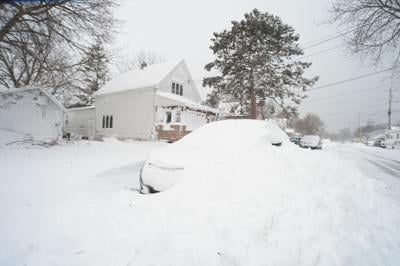The prolonged winter storm that brought heavy snow, high winds and brutal cold to most of the US this past week has killed at least 37 people and had hundreds of thousands without power on Christmas morning.
Perhaps the worst impact was around Buffalo, New York, where 43 inches of snow fell as of Sunday morning, according to the National Weather Service. The snowfall and blizzard conditions made roads impassable, froze power substations and left more than a dozen people dead, Erie County officials said.
The conditions eased slightly on Sunday, allowing emergency responders to get out and see the extent of the problem.
“I don’t want to say that this is going to be it because that would be a fallacy for me to say that, because we know that there are people who have been stuck in cars for more than two days,” Erie County Executive Mark Poloncarz said Sunday. “There are people in homes who are below freezing temperatures.”
New York Gov. Kathy Hochul called it the “most devastating storm in Buffalo’s long storied history” due to its power and its extended length.
“It’s a crisis of epic proportion,” Hochul told CNN’s Paula Reid on Sunday.
Over the past week, this winter storm brought dangerously cold temperatures, blizzard conditions and coastal flooding to almost the entirety of the US, wrecking Christmas plans along the way.
More than 55 million people were under wind chill alerts Sunday morning, and freeze warnings are in effect across the South.
The blizzard conditions persisted Sunday across the Great Lakes, while frigid cold temperatures gripped the eastern two-thirds of the country.
Some major cities in the Southeast, Midwest and East Coast recorded their coldest Christmas in decades. In Florida, it will be the coldest December 25 since 1983 for Miami, Tampa, Orlando and West Palm Beach.
New York City also saw record cold temperatures on Christmas Eve at several locations, including its JFK and LaGuardia airports. The high at Central Park was 15 degrees, marking it the second-coldest December 24 in at least 150 years, according to the National Weather Service.
Temperatures are forecast to rebound later in the week with a much-welcomed warming trend with above-normal temperatures.
About 250,000 homes and businesses in the US had no electricity service as of about 11 a.m. ET Sunday, with nearly half of those affected in Maine and New York, according to PowerOutage.us. Since the start of the storm the number of outages has at times exceeded a million customers.





